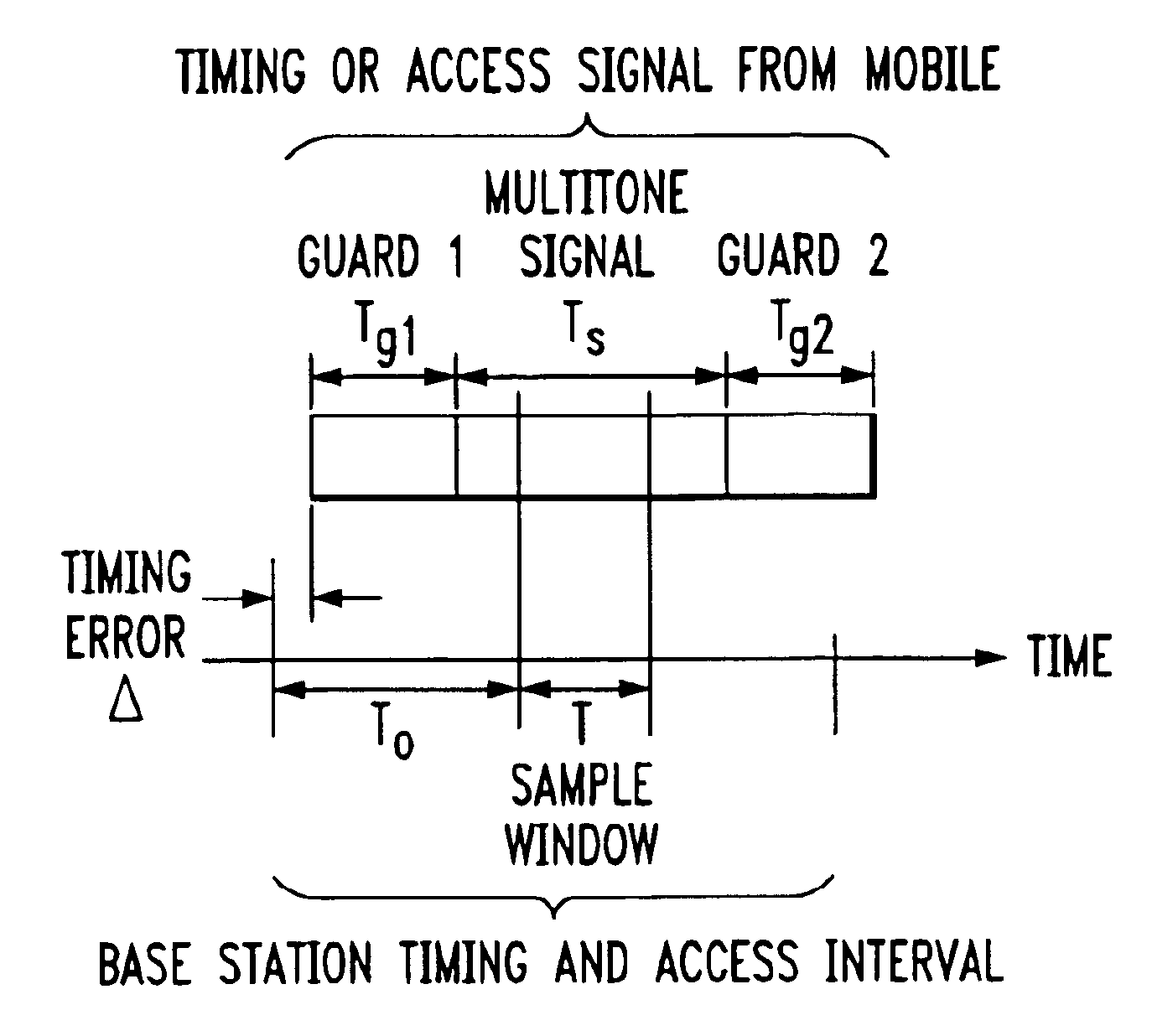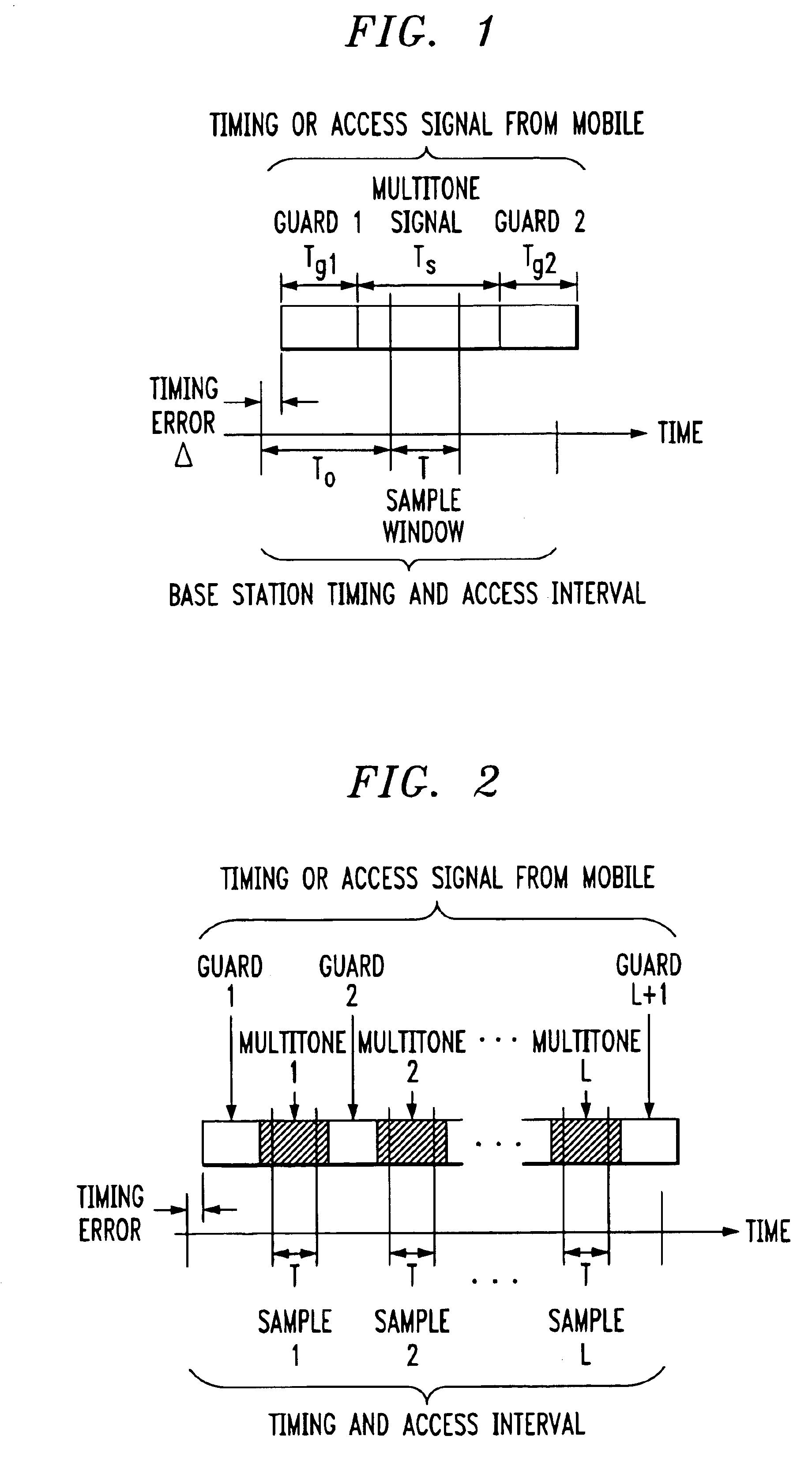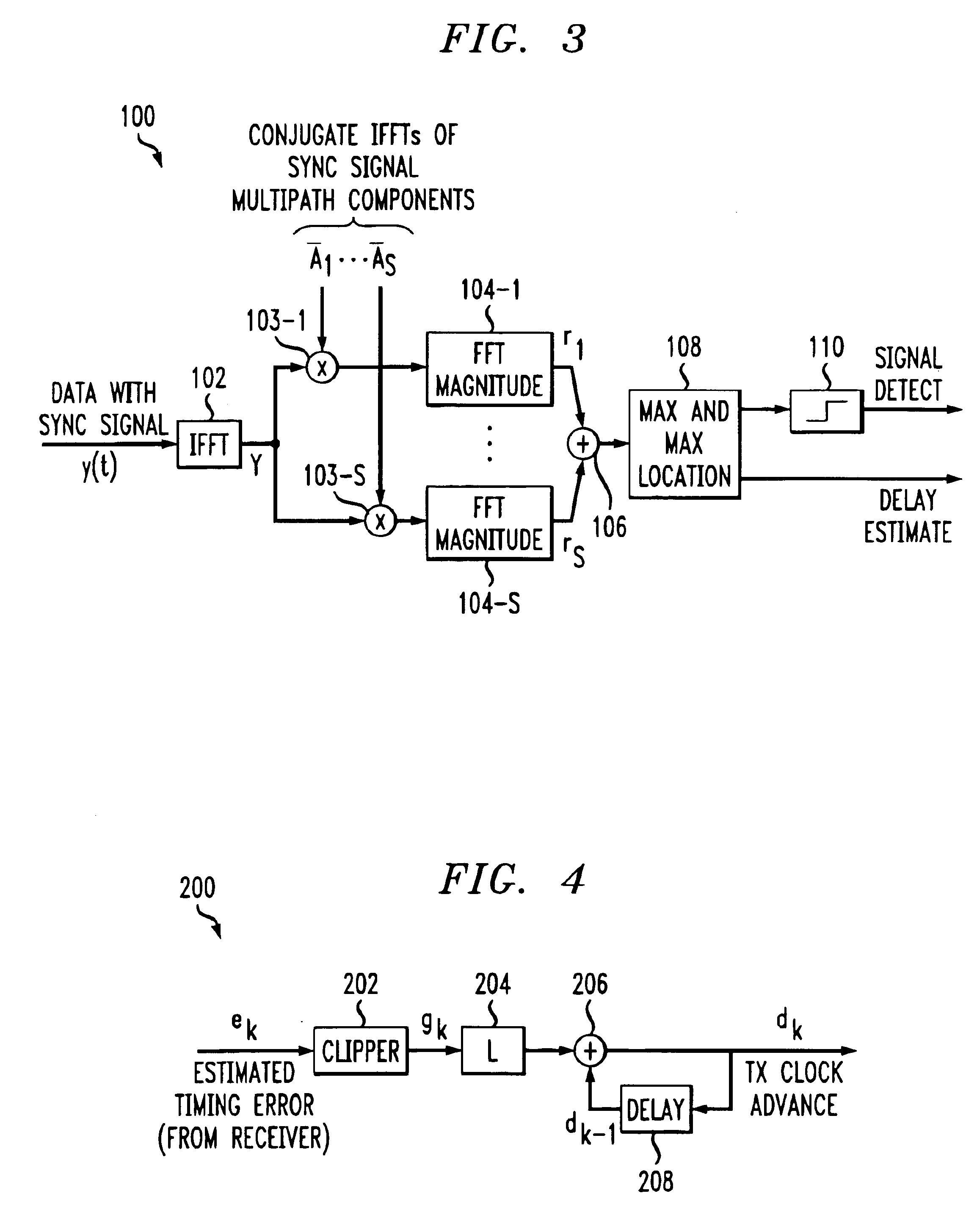Signal construction, detection and estimation for uplink timing synchronization and access control in a multi-access wireless communication system
a wireless communication system and multi-access technology, applied in the field of wireless communication systems, can solve the problems of insufficient address of conventional techniques, interference between signals, and the requirement of strict timing synchronization and access control, and achieve the effect of improving estimation accuracy
- Summary
- Abstract
- Description
- Claims
- Application Information
AI Technical Summary
Benefits of technology
Problems solved by technology
Method used
Image
Examples
example design
[0067]A simple example will now be provided to illustrate the design procedures described above. Consider an OFDM system having the parameters shown in Table 1. The parameters are based on an outdoor cellular wireless system with voice traffic. We assume a symbol period of TSYM=100 μs, which provides a symbol rate of 10 ksymbols per second. With quaternary phase shift keying (QPSK) modulation, this rate is adequate to support, on single tone, a standard voice coding rate of 9.6 kbps with rate ½ coding. The maximum delay spread assumption of δmax=5 μs would cover worst-case channels in non-mountainous terrain. The cyclic prefix of 15 μs allows for the 5 μs delay spread along with timing errors of + / −5 μs. The fundamental tone period is T=TSYM−TCP=85 μs, and the tone spacing is 1 / T=12.5 kHz. A standard bandwidth allocation of 5 MHz, fits N1=380 tones with 5% excess bandwidth. To support FFT processing, which requires a number of tones equal to a power of two, we assume for this exampl...
PUM
 Login to View More
Login to View More Abstract
Description
Claims
Application Information
 Login to View More
Login to View More - R&D
- Intellectual Property
- Life Sciences
- Materials
- Tech Scout
- Unparalleled Data Quality
- Higher Quality Content
- 60% Fewer Hallucinations
Browse by: Latest US Patents, China's latest patents, Technical Efficacy Thesaurus, Application Domain, Technology Topic, Popular Technical Reports.
© 2025 PatSnap. All rights reserved.Legal|Privacy policy|Modern Slavery Act Transparency Statement|Sitemap|About US| Contact US: help@patsnap.com



